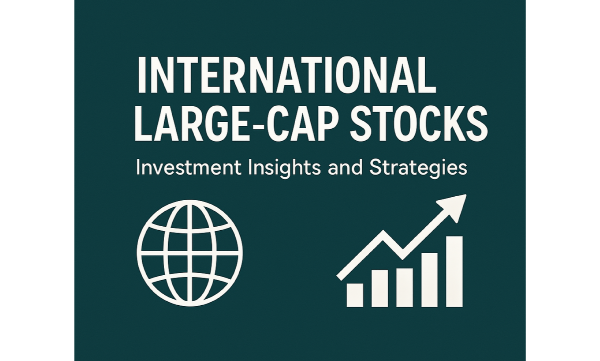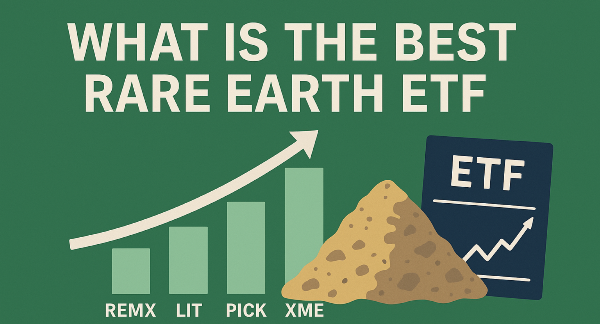Introduction
Large-cap stocks refer to companies with a substantial market capitalization, typically exceeding several billion dollars. These firms are often industry leaders with stable earnings and broad market influence. Investing in international large-cap stocks allows investors to diversify their portfolios beyond domestic markets, reducing risk and enhancing growth potential. Global stock markets, including exchanges in the United States, Europe, and Asia, play a crucial role in shaping investment opportunities, each offering unique benefits and challenges.
Understanding Large Cap Stocks
Large-cap stocks represent companies with significant market capitalizations, often exceeding billions of dollars. These firms are typically industry leaders with established reputations, strong financials, and extensive resources. Due to their size and influence, large-cap companies tend to have lower volatility compared to smaller firms, making them attractive to investors seeking stability. Large-cap stocks are commonly found in major indices such as the S&P 500 and the Dow Jones Industrial Average, reinforcing their prominence in global markets.
One of the key advantages of large-cap stocks is their ability to withstand economic downturns better than mid-cap and small-cap companies. Additionally, large-cap firms often pay consistent dividends, making them appealing to income-focused investors. Investors often compare large-cap stocks to mid-cap and small-cap stocks to determine the best fit for their portfolios. Large-cap stocks provide security and steady returns.
Benefits of Investing in International Large Cap Stocks
Investing in international large-cap stocks provides significant portfolio diversification, reducing overall risk exposure. By allocating assets across different global markets, investors can mitigate the impact of domestic economic downturns. International diversification allows access to industries and sectors that may not be well-represented in a single country, enhancing stability and long-term growth potential. Additionally, exposure to multiple currencies can serve as a hedge against inflation and currency depreciation.
Global economic growth presents opportunities for investors to capitalize on expanding markets and emerging industries. Exposure to industry leaders across different markets enhances investment potential by tapping into globally recognized companies with strong financial performance. Many multinational corporations dominate their respective sectors, benefiting from economies of scale, extensive distribution networks, and established brand recognition.
Key Markets for International Large Cap Stocks
The United States remains a dominant force in global equity markets, with large-cap stocks representing a significant portion of international investment portfolios. Companies listed on major U.S. exchanges, such as the New York Stock Exchange and Nasdaq, benefit from strong regulatory frameworks, high liquidity, and investor confidence. However, international markets offer diversification opportunities, allowing investors to access industries and economic cycles. Major financial hubs across Europe, Asia, and emerging markets play a crucial role in shaping global investment trends. Stock exchanges worldwide serve as gateways for investors seeking international large-cap stocks.
Top International Large Cap Stocks to Consider
International large-cap stocks span various sectors, each offering unique investment opportunities. Technology giants, such as those listed on the Nasdaq, continue to drive innovation and global economic growth. Financial services firms, including major banks and asset management companies, provide stability and consistent returns. Consumer cyclical and defensive stocks, ranging from retail to healthcare, offer resilience in different market conditions.
Understanding sector performance helps investors align their portfolios with industries poised for long-term success. Performance trends and historical returns play a crucial role in evaluating international large-cap stocks. Companies with strong fundamentals, such as stable earnings and competitive advantages, tend to perform well across economic cycles.
Investment Strategies for International Large Cap Stocks
Investors can approach international large-cap stocks through direct stock investments or diversified funds such as ETFs and mutual funds. Direct stock investment allows for targeted exposure to specific companies, enabling investors to select firms based on financial performance and industry trends. However, this method requires extensive research and monitoring. ETFs and mutual funds offer a more diversified approach, spreading risk across multiple stocks and regions. Economic and geopolitical risks play a significant role in international investing. Currency fluctuations influence the returns of international large-cap stocks.
Risk Factors and Considerations
Political and regulatory risks can significantly impact international large-cap stocks. Governments may introduce new policies, trade restrictions, or tax regulations that affect business operations and profitability. Sudden changes in leadership or geopolitical tensions can create uncertainty, leading to market volatility. Companies operating in multiple regions often implement risk management strategies to navigate these challenges and maintain stability.
Currency exchange rate volatility is another crucial factor for international investors. Investors often use hedging strategies, such as currency-hedged ETFs, to mitigate risks associated with exchange rate movements. Market downturns and economic instability pose risks to international large-cap stocks. Investors should diversify their portfolios across multiple regions and industries to minimize exposure to economic downturns.
How to Research International Large Cap Stocks
Understanding financial statements and key metrics is essential when researching international large-cap stocks. Investors analyze balance sheets, income statements, and cash flow reports to assess a company's financial health. Key metrics such as price-to-earnings ratio, return on equity, and debt-to-equity ratio provide insights into profitability, efficiency, and risk levels. Stock screeners are valuable tools for filtering international large-cap stocks based on specific criteria. Identifying strong fundamentals and growth potential requires a combination of financial analysis and market research.
Tax Implications of International Stock Investments
Tax treatment of dividends and capital gains varies across jurisdictions, affecting the overall returns on international stock investments. In the United States, dividends from foreign stocks are generally taxed at the same rate as domestic dividends, but they may not always qualify for the lower tax rates applied to qualified dividends. Capital gains from selling international stocks are subject to U.S. capital gains tax, which depends on the holding period and the investor’s tax bracket. Some countries impose additional taxes on foreign investors, making it essential to understand local tax laws before investing.
Foreign withholding taxes are another key consideration for international investors. Many countries deduct a percentage of dividends paid to foreign shareholders before they receive their distributions. This withholding tax rate varies by country and can significantly impact investment income. Optimizing tax efficiency in international stock investments requires strategic planning.
Conclusion
Investing in international large-cap stocks offers a strategic opportunity for portfolio diversification and access to global economic growth. These stocks provide exposure to industry leaders across different markets, allowing investors to participate in emerging trends and stable financial performance. Understanding key markets, risk factors, and investment strategies is essential for making informed decisions. By researching financial statements, using stock screeners, and analyzing fundamental metrics, investors can identify companies with strong growth potential. As global markets continue to evolve, a well-balanced approach to international large-cap stocks can enhance long-term investment success while managing volatility and geopolitical risks.




























Introduction
Large-cap stocks refer to companies with a substantial market capitalization, typically exceeding several billion dollars. These firms are often industry leaders with stable earnings and broad market influence. Investing in international large-cap stocks allows investors to diversify their portfolios beyond domestic markets, reducing risk and enhancing growth potential. Global stock markets, including exchanges in the United States, Europe, and Asia, play a crucial role in shaping investment opportunities, each offering unique benefits and challenges.
Understanding Large Cap Stocks
Large-cap stocks represent companies with significant market capitalizations, often exceeding billions of dollars. These firms are typically industry leaders with established reputations, strong financials, and extensive resources. Due to their size and influence, large-cap companies tend to have lower volatility compared to smaller firms, making them attractive to investors seeking stability. Large-cap stocks are commonly found in major indices such as the S&P 500 and the Dow Jones Industrial Average, reinforcing their prominence in global markets.
One of the key advantages of large-cap stocks is their ability to withstand economic downturns better than mid-cap and small-cap companies. Additionally, large-cap firms often pay consistent dividends, making them appealing to income-focused investors. Investors often compare large-cap stocks to mid-cap and small-cap stocks to determine the best fit for their portfolios. Large-cap stocks provide security and steady returns.
Benefits of Investing in International Large Cap Stocks
Investing in international large-cap stocks provides significant portfolio diversification, reducing overall risk exposure. By allocating assets across different global markets, investors can mitigate the impact of domestic economic downturns. International diversification allows access to industries and sectors that may not be well-represented in a single country, enhancing stability and long-term growth potential. Additionally, exposure to multiple currencies can serve as a hedge against inflation and currency depreciation.
Global economic growth presents opportunities for investors to capitalize on expanding markets and emerging industries. Exposure to industry leaders across different markets enhances investment potential by tapping into globally recognized companies with strong financial performance. Many multinational corporations dominate their respective sectors, benefiting from economies of scale, extensive distribution networks, and established brand recognition.
Key Markets for International Large Cap Stocks
The United States remains a dominant force in global equity markets, with large-cap stocks representing a significant portion of international investment portfolios. Companies listed on major U.S. exchanges, such as the New York Stock Exchange and Nasdaq, benefit from strong regulatory frameworks, high liquidity, and investor confidence. However, international markets offer diversification opportunities, allowing investors to access industries and economic cycles. Major financial hubs across Europe, Asia, and emerging markets play a crucial role in shaping global investment trends. Stock exchanges worldwide serve as gateways for investors seeking international large-cap stocks.
Top International Large Cap Stocks to Consider
International large-cap stocks span various sectors, each offering unique investment opportunities. Technology giants, such as those listed on the Nasdaq, continue to drive innovation and global economic growth. Financial services firms, including major banks and asset management companies, provide stability and consistent returns. Consumer cyclical and defensive stocks, ranging from retail to healthcare, offer resilience in different market conditions.
Understanding sector performance helps investors align their portfolios with industries poised for long-term success. Performance trends and historical returns play a crucial role in evaluating international large-cap stocks. Companies with strong fundamentals, such as stable earnings and competitive advantages, tend to perform well across economic cycles.
Investment Strategies for International Large Cap Stocks
Investors can approach international large-cap stocks through direct stock investments or diversified funds such as ETFs and mutual funds. Direct stock investment allows for targeted exposure to specific companies, enabling investors to select firms based on financial performance and industry trends. However, this method requires extensive research and monitoring. ETFs and mutual funds offer a more diversified approach, spreading risk across multiple stocks and regions. Economic and geopolitical risks play a significant role in international investing. Currency fluctuations influence the returns of international large-cap stocks.
Risk Factors and Considerations
Political and regulatory risks can significantly impact international large-cap stocks. Governments may introduce new policies, trade restrictions, or tax regulations that affect business operations and profitability. Sudden changes in leadership or geopolitical tensions can create uncertainty, leading to market volatility. Companies operating in multiple regions often implement risk management strategies to navigate these challenges and maintain stability.
Currency exchange rate volatility is another crucial factor for international investors. Investors often use hedging strategies, such as currency-hedged ETFs, to mitigate risks associated with exchange rate movements. Market downturns and economic instability pose risks to international large-cap stocks. Investors should diversify their portfolios across multiple regions and industries to minimize exposure to economic downturns.
How to Research International Large Cap Stocks
Understanding financial statements and key metrics is essential when researching international large-cap stocks. Investors analyze balance sheets, income statements, and cash flow reports to assess a company's financial health. Key metrics such as price-to-earnings ratio, return on equity, and debt-to-equity ratio provide insights into profitability, efficiency, and risk levels. Stock screeners are valuable tools for filtering international large-cap stocks based on specific criteria. Identifying strong fundamentals and growth potential requires a combination of financial analysis and market research.
Tax Implications of International Stock Investments
Tax treatment of dividends and capital gains varies across jurisdictions, affecting the overall returns on international stock investments. In the United States, dividends from foreign stocks are generally taxed at the same rate as domestic dividends, but they may not always qualify for the lower tax rates applied to qualified dividends. Capital gains from selling international stocks are subject to U.S. capital gains tax, which depends on the holding period and the investor’s tax bracket. Some countries impose additional taxes on foreign investors, making it essential to understand local tax laws before investing.
Foreign withholding taxes are another key consideration for international investors. Many countries deduct a percentage of dividends paid to foreign shareholders before they receive their distributions. This withholding tax rate varies by country and can significantly impact investment income. Optimizing tax efficiency in international stock investments requires strategic planning.
Conclusion
Investing in international large-cap stocks offers a strategic opportunity for portfolio diversification and access to global economic growth. These stocks provide exposure to industry leaders across different markets, allowing investors to participate in emerging trends and stable financial performance. Understanding key markets, risk factors, and investment strategies is essential for making informed decisions. By researching financial statements, using stock screeners, and analyzing fundamental metrics, investors can identify companies with strong growth potential. As global markets continue to evolve, a well-balanced approach to international large-cap stocks can enhance long-term investment success while managing volatility and geopolitical risks.